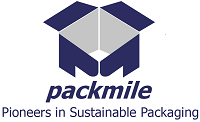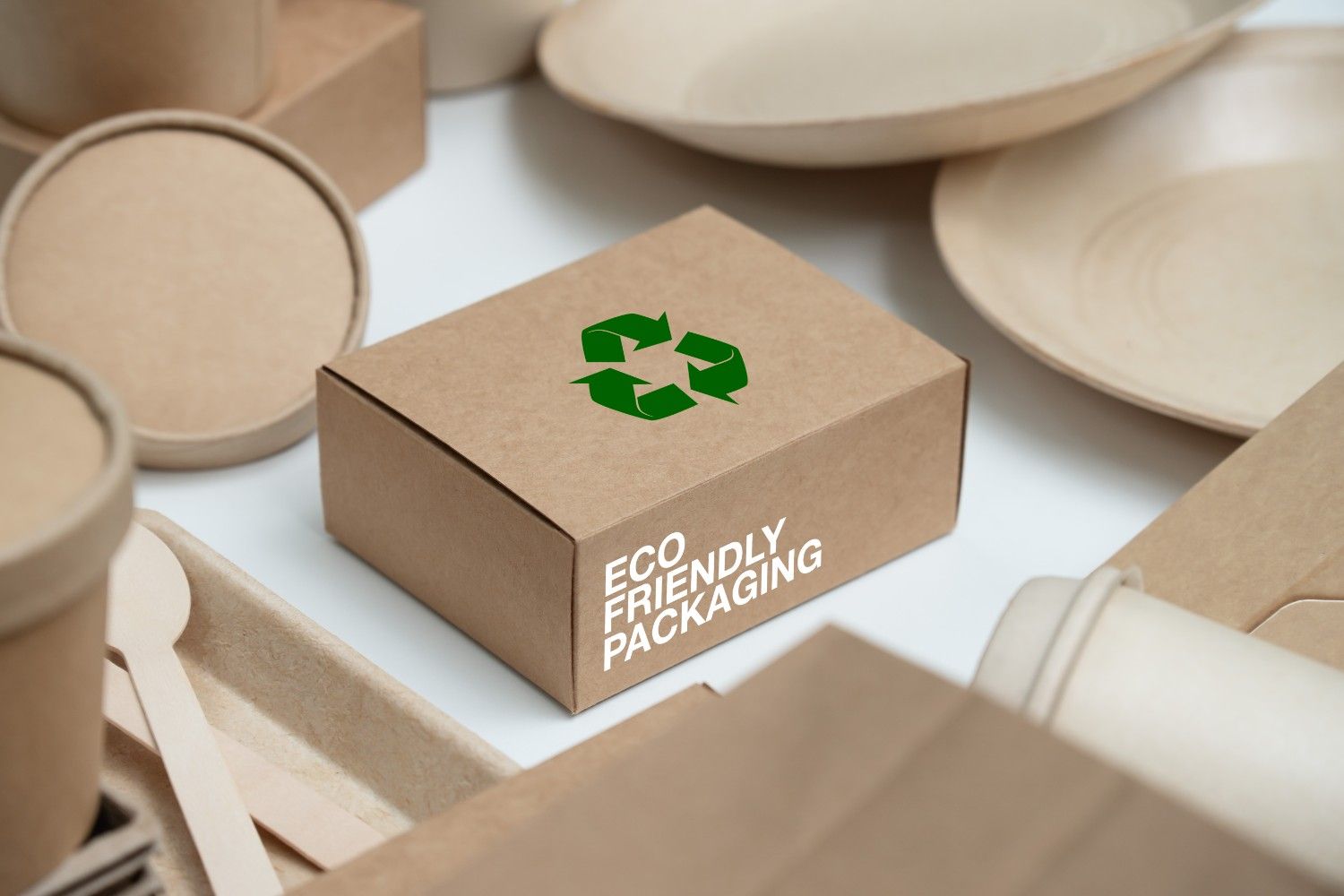Sustainability is no longer just a concept. It’s a full-blown global movement, and businesses are feeling the heat. Everyone’s being asked the same question: what are you doing to be greener? And packaging? It’s suddenly front and center.
Take a second and think about how many packages you open in a week. Food deliveries. Online orders. Even that new skincare product. Now think about the boxes, the wraps, the fillers. It adds up fast. People are noticing. So are regulators.
The truth is, eco-friendly packaging is no longer just a feel-good option. It’s a business move. A smart one. Customers care deeply about how things are made and delivered. They’re paying attention. They’re asking questions. If your packaging feels wasteful, your brand might too.
That’s why companies across the board are rethinking their approach. Not just to tick a box- but to stay relevant, build trust, and lead with purpose.
Understanding Eco-Friendly Packaging in Depth
So, what exactly is eco-friendly packaging?
Simply put, it refers to materials and designs that minimize environmental impact. Think biodegradable packaging that disappears without a trace. Recyclable boxes that avoid landfills. Or reusable containers that keep going again and again.
Examples include corrugated cardboard, kraft paper, recycled plastics, and compostable materials like PLA.
The goal? Reduce waste, minimize carbon footprints, and lower the strain on our already stretched ecosystems.
Key Benefits of Switching to Eco-Friendly Packaging
Cost Savings in the Long Run
Yes, the initial switch may seem pricey. However, over time, sustainable packaging has become more economical. Lighter packaging means lower shipping costs. A more brilliant design results in less material used. And when you cut down on waste, your waste disposal bills shrink, too.
Plus, optimizing packaging size reduces storage needs. That means less warehouse space and better inventory control. It all adds up.
Boost in Brand Reputation and Consumer Trust
Today’s shoppers care. They read labels. They ask questions. They want to know what happens after they toss that package away. Brands that switch to eco-friendly packaging don’t just meet expectations- they impress.
Studies show that sustainability-focused companies enjoy higher brand loyalty. People love supporting businesses that stand for something. So when you choose planet-friendly packaging, you’re not just wrapping a product. You’re making a statement.
Compliance with Environmental Regulations
Governments are tightening the noose on pollution. New rules around packaging waste, plastic bans, and sustainability disclosures are popping up everywhere. By adopting eco-friendly packaging now, you’re not only staying compliant- you’re staying ahead.
Avoid penalties. Embrace incentives. Be on the right side of future regulations. Sustainability isn’t a cost. It’s protection.
How to Make the Transition to Eco-Friendly Packaging
Step 1: Assess Your Current Packaging
Start by laying it all out- literally. What are you using right now? Boxes, bubble wrap, fillers, tape, labels… the whole kit. Make a list.
Now ask yourself:
- Can this be recycled or composted—or does it end up in a landfill?
- Are you overdoing it? (Think oversized boxes or way too much padding.)
- Could your packaging be turning eco-conscious customers off?
This is your baseline. Spot the waste. Spot the problem areas. You can’t fix what you haven’t seen clearly.
Step 2: Set Clear Sustainability Goals
Going green without a roadmap is a recipe for wasted time and resources. Define specific, actionable goals aligned with your business objectives. Examples include:
- Reducing overall packaging waste by 30% within 12 months
- Switching to 100% recyclable or compostable materials by a specific date
- Reducing carbon footprint from the packaging supply chain by partnering with local or certified suppliers
Use KPIs to measure progress. Ensure your goals are SMART- Specific, Measurable, Achievable, Relevant, and Time-bound.
Step 3: Choose the Right Sustainable Materials
Not all “eco-friendly” materials are created equal. Consider:
- Recycled paper & cardboard: Great for boxes and inserts, but ensure it’s FSC-certified.
- Kraft paper: Biodegradable and strong, suitable for wrapping or mailers.
- Compostable bioplastics are useful for food and perishables but may require industrial composting facilities.
- Mushroom or cornstarch-based packaging: Innovative and biodegradable but often costlier.
Balance performance, cost, appearance, and environmental impact. Conduct material trials before a full rollout.
Step 4: Redesign Packaging to Be More Efficient
Rethink the packaging design to eliminate waste.
- Can your product be shipped in a mailer instead of a box?
- Can you reduce layers or eliminate plastic windows and coatings?
- Can inserts be replaced by QR codes or printed instructions on the box?
Efficient packaging reduces materials and shipping costs and aligns with customer expectations for sustainability and simplicity.
Step 5: Work with Sustainable Suppliers
Choose partners committed to environmental responsibility. Ask:
- Are their materials certified (FSC, Cradle to Cradle, BPI, etc.)?
- What is their sourcing process?
- How do they handle waste and emissions in their operations?
Start small- order sample runs and perform quality and sustainability checks. Good suppliers should offer transparency and help you comply with regulations and best practices.
Step 6: Educate Your Team
Transitioning to sustainable packaging isn’t just a procurement decision- it affects your entire operation.
- Train your designers on material limitations and possibilities.
- Involve warehouse and logistics teams in testing new packaging systems
- Educate customer service reps on how to communicate the changes to customers
Foster a culture of sustainability by encouraging cross-department collaboration and rewarding eco-friendly initiatives.
Step 7: Monitor and Improve
Eco-friendly packaging is not a one-time fix. Create a process for ongoing evaluation.
- Collect customer feedback on packaging usability and appeal.
- Monitor return rates related to packaging failures
- Track environmental metrics (e.g., reduced CO₂ emissions, waste diverted from landfills)
Stay informed about innovations, regulatory changes, and competitor practices. Regularly revisit your goals and adjust based on what you learn.
How Eco-Friendly Packaging Supports Supply Chain Efficiency
Lightweight packaging makes shipping easier. Smaller packages save shelf and storage space. Strong, sustainable materials reduce the risk of damage during transit. All this helps streamline operations and improve logistics.
Plus, eco-friendly packaging often comes with cleaner sourcing and more innovative designs. That means fewer bottlenecks and more reliable delivery. And let’s not forget the reduced carbon footprint- a massive win in today’s supply chains.
Sustainability and Eco-Friendly Packaging: A Key Differentiator in a Competitive Market
In today’s saturated markets, it’s hard to stand out. But sustainability offers a clear edge. When you embrace eco-friendly packaging, you communicate care. That care translates to trust. And trust? That converts into sales.
Brands that market their sustainable practices see better engagement. Showcase your packaging efforts in ads, product pages, and even on the box. Make it part of your story. Because today, consumers buy more than products—they buy values.
Conclusion
Switching to eco-friendly packaging is just good business. It helps cut waste, brings down costs, wins over customers, and prepares your brand for the future. This isn’t only about going green- it’s about moving forward with purpose.
Sure, the transition takes some work. But the return? It’s worth every effort- for your bottom line and the planet.
Ready to make the shift? Packmile helps businesses go sustainable without losing out on performance or design. Explore our full range of eco-friendly packaging solutions. Let’s create a brighter, greener future- together.
Frequently Asked Questions
Will switching to eco-friendly packaging affect my product protection or shelf life?
Not if done right. Many sustainable materials are just as strong and reliable as conventional options. It's about finding the right fit for your product.
How can I verify if a packaging material is recyclable or compostable?
Look for certifications such as FSC, BPI, or OK Compost. Ask suppliers for documentation. And always read the fine print.
Is eco-friendly packaging suitable for all types of products, including fragile or food items?
Absolutely. With the right materials and design, eco-friendly packaging can safely support everything from electronics to perishable foods.
What are the first steps a small business should take when considering eco-friendly packaging?
Start by reviewing the current packaging. Identify what's wasteful or harmful. Then, research alternatives, test in small batches, and scale smartly.


Leave A Comment